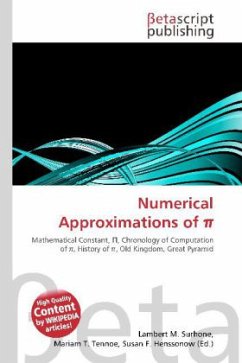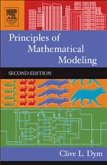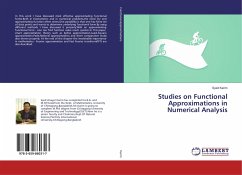Please note that the content of this book primarily consists of articles available from Wikipedia or other free sources online. This page is about the history of mathematical constant . There is a summarizing table at chronology of computation of . See also history of for other aspects of the evolution of our knowledge about mathematical properties of . Its first 50 decimal places are 3.14159 26535 89793 23846 26433 83279 50288 41971 69399 37510.The earliest evidenced conscious use of an accurate approximation for the length of a circumference with respect to its radius is of 3+1/7th in the designs of the Old Kingdom pyramids in Egypt. The Great Pyramid at Giza, built c.2550-2500 B.C, was precisely 1760 cubits around with a height of 280 cubits (1760/280=2xPi). Egyptologists such as Professors Flinders Petrie and I.E.S Edwards have shown that these circular proportions were deliberately chosen for symbolic reasons by the Old Kingdom scribes and architects. The same apotropaic proportions were used earlier at the Pyramid of Meidum c.2600 B.C.
Bitte wählen Sie Ihr Anliegen aus.
Rechnungen
Retourenschein anfordern
Bestellstatus
Storno








